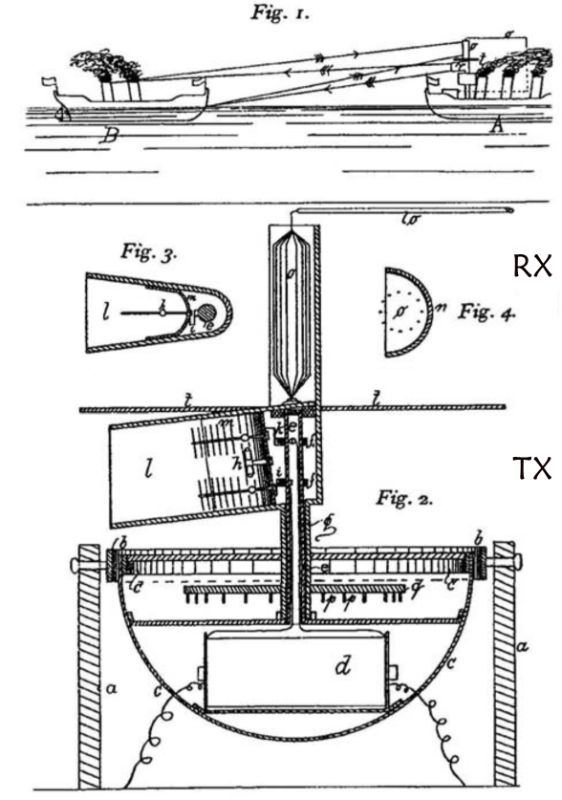
The Long and Short of 77 and 24 GHz Automotive Radar
77 GHz Radar - A Look Back in Time
There is much debate on who invented radar. One of the very first contenders for the position of the world’s oldest radar was the “telemobiloscope,” created by German inventor Christian Hülsmeyer and patented in 1904 (Figure 1). Apparently, Herr Hülsmeyer was inspired to invent a machine that could prevent collisions, after witnessing a grief-stricken mother whose son was killed when two ships collided. The spark-gap telemobiloscope worked well, detecting ships from as far away as 3,000 m. Unfortunately, it never really took off in the transportation sector as a collision avoidance tool.

Fast forward 116 years. radar technology has evolved from the simple spark-gap transmitter/receiver system applied in the telemobiloscope, to a sophisticated multi-billion dollar business in the automotive industry. Nowadays, radar technology is widely applied to enable cars with sensing capabilities for advanced driver assistance systems (ADAS).
About a decade ago, 24 GHz radar sensors started making waves as the technology to enable all-weather ADAS features such as blind spot detection, lane change and parking assistance, and collision avoidance.
The 24 GHz band includes the industrial, scientific and medical (ISM) band from 24.0 GHz to 24.25 GHz. This is often referred to as the narrowband (NB), with a bandwidth of 250 MHz. The 24 GHz band also includes an ultrawide band (UWB), which is 5 GHz wide.

Due to spectrum regulations by the European Telecommunications Standards Institute (ETSI) and the Federal Communications Commission (FCC), the 24 GHz wide bandwidth and UWB bandwidth will not be available for new automotive radar devices after January 1, 2022.
What's Spurring the 77 GHz Radar Sensor Market?
These impending changes are spurring market growth for 77 GHz automotive radar for applications. High-range accuracy and resolution are helping 77 GHz radar sensors overtake their 24 GHz counterparts for ADAS applications. According to ResearchandMarkets, 77 GHz radar shipments overtook 24 GHz radar in December 2018.
It is not surprising that radar chipset makers see potential market growth in the 77 GHz automotive radar market. In recent years, several China radar chip vendors have also become more prominent in the automotive space.
With new chip designs in demand, more cross-collaborations are also happening between chip designers and test solution providers to ensure the chipsets perform flawlessly. For example, earlier in 2019, Keysight Technologies joined forces with Calterah, China’s leading automotive, millimeter-wave radar chipset design house.
Calterah used Keysight’s automotive radar test solution to test its new ALPS chipset, ensuring the functionality and performance of each sub-module of ALPS, from digital to analog, and RF tests, as well as the final system-on-a-chip.
Market analyst Technavio forecasts that the automotive radar sensors market size will grow by USD 4.29 billion during 2018-2022. The shift away from 24 GHz and toward 77 GHz and higher frequency bands will continue, buoyed by government policies promoting radar sensors for road safety. The ability of 77 GHz and higher-frequency radar ranges to provide better resolution in much smaller form factors are also big plus points.
For automotive radar chip makers, global markets offer significant business potential as carmakers gear up to launch Level 5 autonomous vehicles, or truly self-driving cars, within the next decade. Business potential aside, automotive radar developers continue to hold onto the tenet, that good technology truly can save lives.